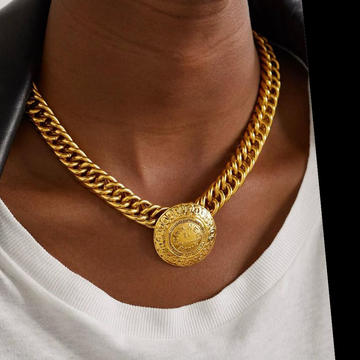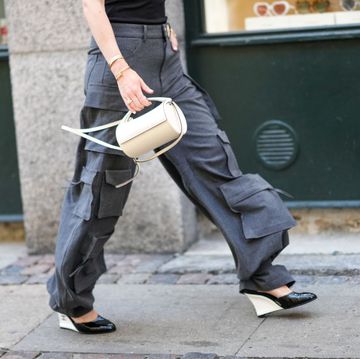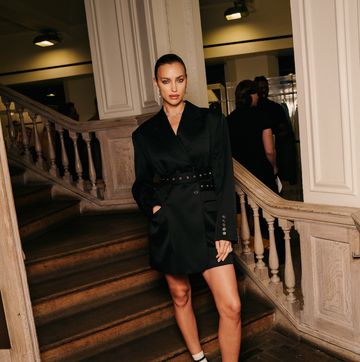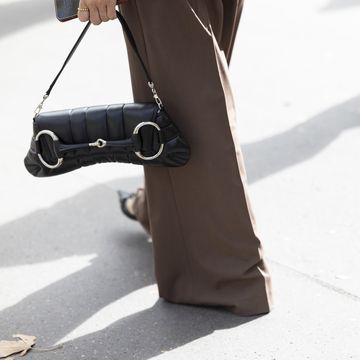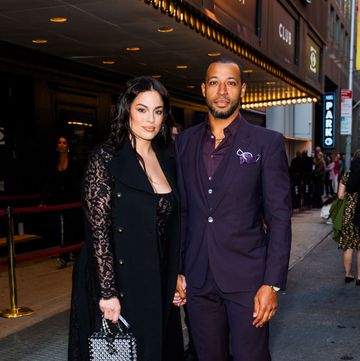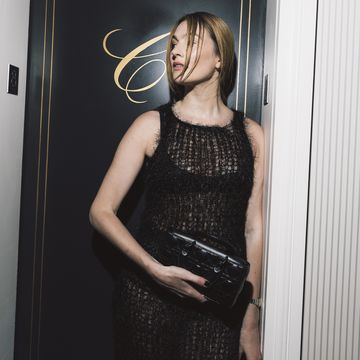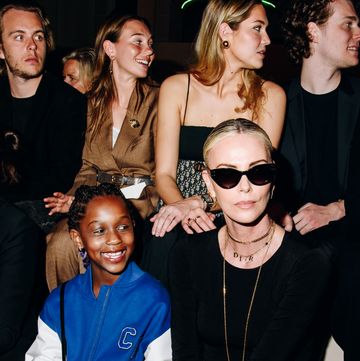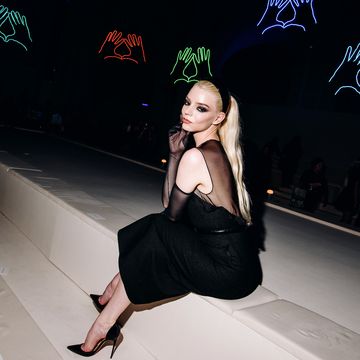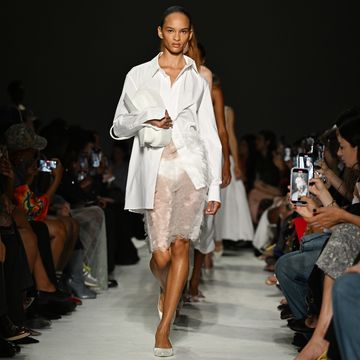By: Rebecca Lowthorpe Follow @Rebecca_ELLE
1. Jonathan Saunders 2. Mary Katrantzou 3. Richard Nicoll 4. Marios Schwab
show had everything you want from London: ideas, conviction, creativity and theatre. Hed been thinking about humble discarded objects hence the backdrop installations at his Tate Britain show that featured piles of old TVs and music speakers. And this idea, of taking something with no perceived value and transforming it into something precious, took him back to his years at Central Saint Martins where he made his own textiles out of scraps of anything he could lay his hands on. Thats how he arrived at those huge-shouldered coats that appeared to have been crafted from cardboard but were in fact cut from soft wool, or those delicate dresses that were patchworked together from squares of mismatched fabrics. It was also the 1980s, Leigh Bowery, all those dancers, costumiers from that time who had no money but created decadence and theatre out of nothing, he said. With its smorgasbord of textures and colour, from chunky hand knit sweaters to luxuriously oversized leather jackets, his collection captured that undiluted creative passion.
Left to right: Jonathan Saunders, Mary Katrantzou, Richard Nicoll
The most obvious thing to say about was that there were no prints. It felt as if the designer who spearheaded Londons digital print revolution had found a new way to say exactly what she wanted without compromising the essence of what makes her Mary. She applied her inimitable eye to surface detail jacquards, lace, stones, jewels, drape but she also reached beyond the expected sculptural silhouettes and stripped back. There were Crombie coats! Trouser suits! Even a navy pea coat! Sweatshirts! Well, fur sweatshirts, embroidered with jewels, but still. The starting point was everyday uniforms: butchers, bakers, City boys, scouts, mechanics. Then she examined symbols, from road signs to military appliques and heraldic insignia that formed intricate lace. Was it a purposeful move away from print? All part of the Katrantzou masterplan to exhibit new skills. And was it a conscious move to add more wearability into her silhouettes? Now more people recognize my work, its important that it can be merchandised in a new way. We even started working on accessories I never thought Id put a bag down the runway! she said. As for showing her collection on a seasoned generation of models that she grew up looking at in magazines, such as Kirsten Owen and Emma Balfour: Women from 25 to 75 wear my clothes so its important to see them modeled on women of all ages.
needs to bottle whatever it is that made him produce his strong, fresh collection. His creative splurging of rich fabrics over simple easy shapes is precisely what he needs to harness and consistently develop. Through a palette of vivid blues and the occasional crimson, Nicoll took us through what should fast become his signature pieces: the easy trouser suit, the drapey long skirt with a luxury sportswear vibe, a great knit (here, in mint, raspberry, cobalt), the big coat and the kind of laid-back dress, but with a touch of opulence, that looks as good with a velvet heel as it does with a bronze sneaker.
There are designers that look at the female body like architects and map it out with angles and sharp lines and those who hint at its form through shadowy layers. can do both. He opened with sharp little black dresses, their only feature flat silver studs or an occasional lace bra peaking through a deep V-neck. Its a while since weve seen short all the way up to mid thigh! and it looked refreshing after the longer hemline fixations of New York. Aside from all those dresses that sometimes exposed a single shoulder or elegantly wafted to the floor in a haze of peppermint there were some great bomber jackets in black leather and one in navy satin that were loaded with Schwabs inimitable cool girl attitude.
Read Lorraine Candy's exclusive LFW Blog



